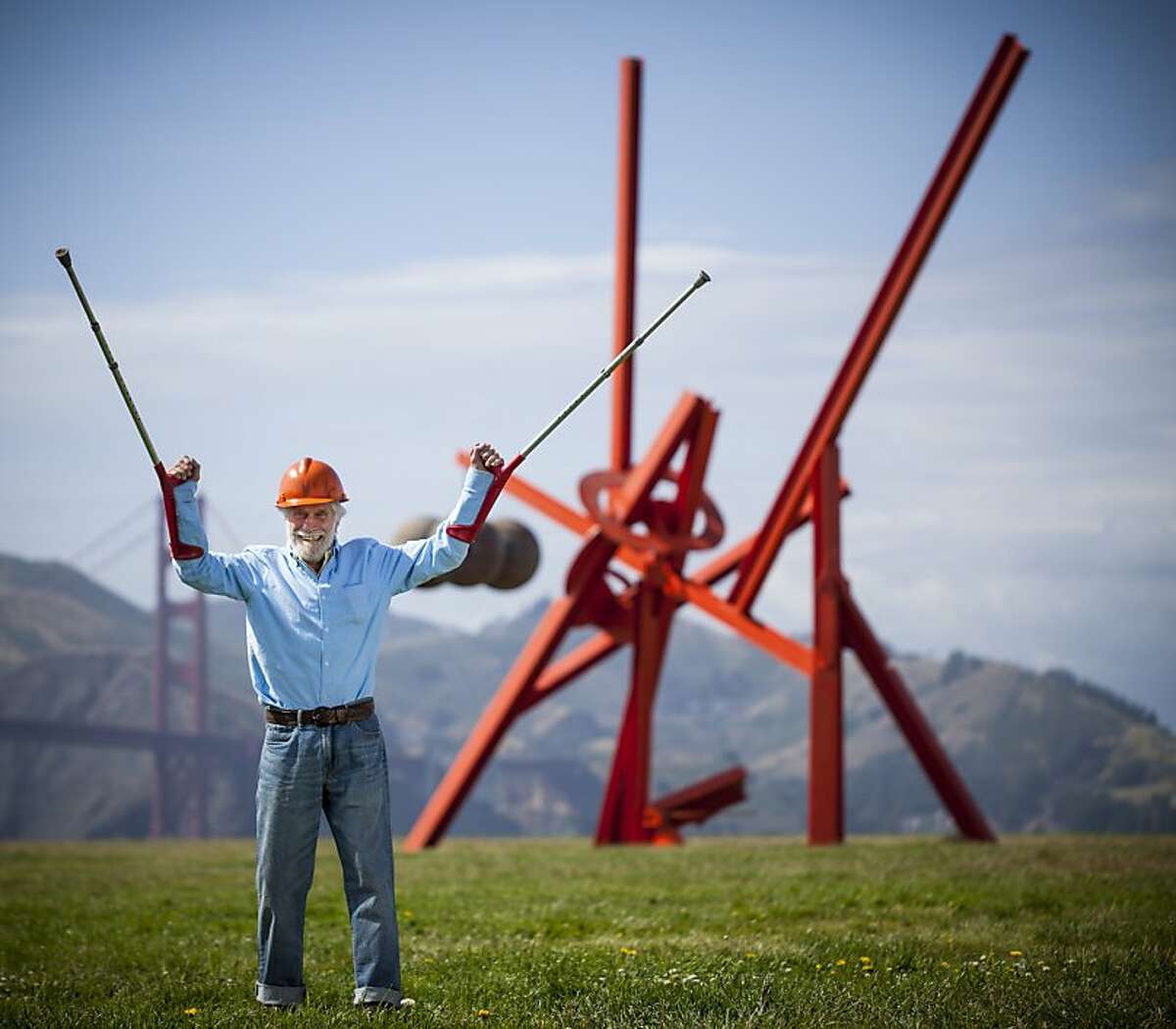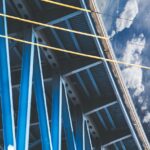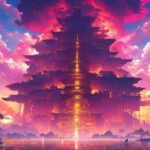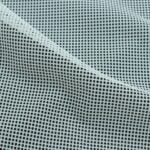Mark di Suvero’s monumental steel sculptures invite viewers to engage with art in a truly unique way. These dynamic creations, often incorporating moving elements, transform public spaces into interactive experiences, prompting contemplation and play. Let’s explore the life and work of this influential artist who has reshaped the landscape of contemporary sculpture.
Di Suvero’s Interactive Art: A Playground for the Mind and Body
Mark di Suvero. The name itself evokes a sense of grandeur, and encountering his sculptures confirms this impression. Born in Shanghai in 1933 and ultimately settling in New York City, di Suvero has taken the industrial nature of steel and transformed it into breathtaking works that blur the line between art and architecture. Imagine strolling through a park and coming face-to-face with a towering structure of vibrant, painted steel beams, seemingly defying gravity. This is the hallmark of di Suvero’s art. His creations are not meant for passive observation; they beckon interaction. He often integrates moving parts—swings, levers, and beams that shift and rock—inviting the viewer to become a participant. You’re not merely observing; you’re experiencing the weight of the metal, the push and pull of the levers, the gentle sway of a suspended beam. It’s a playful exploration of physics, balance, and motion. Step into the enigmatic world of James Whistler’s Arrangement in Grey and Black, where ethereal figures emerge from the canvas, much like the figures that might be imagined interacting with di Suvero’s works. Embark on a surreal journey through Jackson Pollock’s Lavender Mist, where vibrant hues dance across the canvas, capturing the essence of an untamed spirit, similar to the energy di Suvero imbues into his steel sculptures.
The Evolution of an Artist: From Industrial Grit to Artistic Vision
Di Suvero’s artistic journey began in the vibrant art scene of late 1950s New York. The city’s construction sites and industrial landscapes provided inspiration and raw materials. He saw potential in discarded I-beams, transforming salvaged steel into towering forms. This resourcefulness reflects a deeper philosophy—a belief in the interconnectedness of things, finding harmony and balance in seemingly disparate elements. Photographs struggle to capture the sheer scale of these sculptures. Standing beneath one, the intricate network of beams and plates, the vibrant colors, and the immense height create a sense of awe. They dominate the landscape yet maintain an elegance, inviting exploration rather than imposing their presence.
Exploring Deeper Themes: Physics, Philosophy, and Community
Di Suvero’s work delves into profound themes. His fascination with physics manifests in three-dimensional explorations of balance, tension, compression, gravity, and momentum. They suggest a constant state of becoming, a dynamic equilibrium that reflects the ever-changing nature of the universe. Beyond the physical, di Suvero advocates for artists’ rights and believes in art’s power to build community. He envisions his sculptures as gathering spaces where people can connect and experience art together. His impact on contemporary sculpture is undeniable, earning him the National Medal of Arts and a place in prestigious museums worldwide. He has redefined sculpture, demonstrating its potential for interactivity, playfulness, and intellectual engagement. He has transformed cold steel into something dynamic, human, and inspiring. The exploration of his work is an ongoing journey, likely evolving as we continue to interact with it.
Where Does Mark di Suvero Live and Create?
Mark di Suvero, the renowned sculptor, resides in Astoria, Queens, New York City, with his wife, Kate D. Levin, and their daughter. His Astoria studio, a sprawling complex of warehouses on the East River, serves as the heart of his creative operations. Born in Shanghai and raised internationally, di Suvero’s journey eventually led him to Astoria, a neighborhood that resonates with his artistic sensibilities. Di Suvero’s wife, Kate D. Levin, a former New York City Commissioner of Cultural Affairs, also plays a significant role in the city’s artistic landscape.
Di Suvero’s studio environment is unique, described by some as an “almost secret commune.” This communal workspace likely fosters a dynamic exchange of ideas and energy, further enriching his creative process. His other studios in Petaluma, California, and Chalon-sur-Saône, France (where he founded the art space La Vie des…) suggest a global perspective that informs his work.
Di Suvero’s sculptures, often enormous and interactive, encourage physical engagement. They are designed to be explored, climbed upon, and experienced, inviting a sense of childlike wonder. Many believe this playfulness reflects di Suvero’s personality and approach to life. Some art critics suggest his works delve into deeper themes of interconnectedness, balance, and the dynamic equilibrium of the universe. These massive steel beams, precariously balanced yet stable, might represent the delicate yet powerful forces that hold everything together.
While Astoria is his home base, di Suvero’s influence extends globally. His sculptures grace public spaces worldwide, each telling a story of artistic vision, place, and the people who interact with them. As long as he continues to create in his Astoria studio, we can anticipate more awe-inspiring works to come. Our understanding of di Suvero’s life and work continues to evolve, promising a deeper appreciation of his artistic contributions.
Mark Rothko: A Life Devoted to Color and Emotion (1903-1970)
Mark Rothko, born Marcus Rothkowitz on September 25, 1903, in Dvinsk, Russia (now Daugavpils, Latvia), is renowned for his vibrant color-block paintings. These seemingly simple yet deeply evocative works have solidified his place as a master of Abstract Expressionism. Rothko’s journey, from his early life in Russia to his tragic death on February 25, 1970, in New York City, was marked by artistic exploration and personal struggles.
Rothko’s family immigrated to the United States in 1913, settling in Portland, Oregon, to escape growing antisemitism and avoid conscription into the Tsar’s army. This experience likely shaped Rothko’s perspective, influencing his later explorations of universal human emotions in his art. He began his artistic career in New York City after a period working in the garment industry, a common practice for artists seeking financial stability while pursuing their passion.
His early works displayed realistic and surrealist influences, offering a glimpse into his artistic development and the path that led him to Abstract Expressionism. In the 1940s, Rothko’s art shifted toward abstract forms and color field painting, culminating in his signature style of large canvases featuring rectangular blocks of color. He gained prominence in the 1950s and 60s, achieving international recognition. Some believe his use of color evokes primal emotions—tragedy, ecstasy, doom—while others suggest a search for the spiritual in a secular world. There’s no single answer, adding to the captivating ambiguity of his art.
Rothko’s later years were marked by increasing reclusiveness, struggles with depression and health issues, and the pressures of fame. He was commissioned to create murals for the Four Seasons restaurant, a project he later withdrew. Tragically, he took his own life in his Manhattan studio in 1970. His legacy, however, continues to thrive. His works are displayed in major museums globally, and his influence on contemporary art endures. The Rothko Chapel in Houston, Texas, houses a series of his paintings, serving as a non-denominational space for contemplation and a testament to the enduring power of his art. Ongoing research continues to explore the complexities of Rothko’s work, ensuring that his artistic vision continues to inspire and challenge viewers for generations to come.
- Unveiling the Enigma: Mansoureh Khojasteh Bagherzadeh’s Public Appearances & Private Life in Iran - July 18, 2025
- Unveiling the Mystery: Mansoureh Khojasteh Bagherzadeh’s Husband: A Rare Glimpse into a Private Life - July 18, 2025
- Unveiling Masoud Khamenei’s Mother: Power, Influence, and Iran’s Future - July 18, 2025

















1 thought on “Mark di Suvero: Transforming Landscapes with Dynamic Steel Sculpture”
Comments are closed.